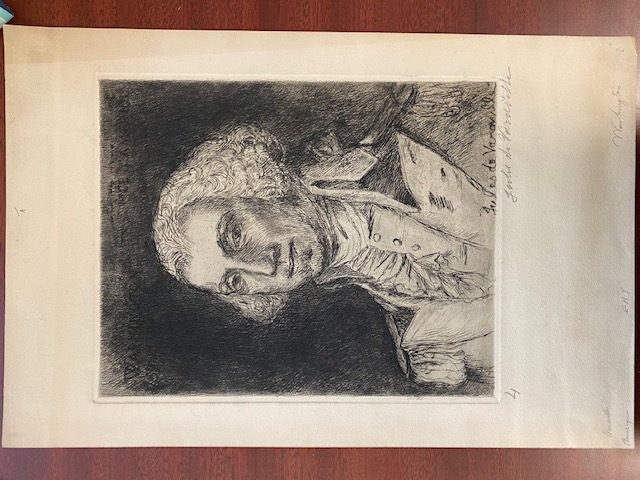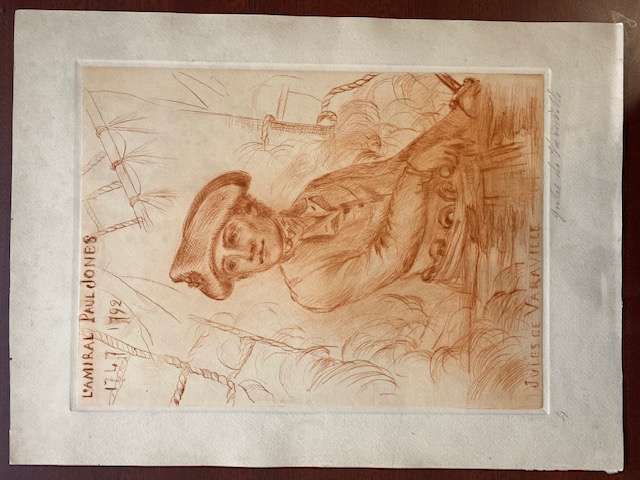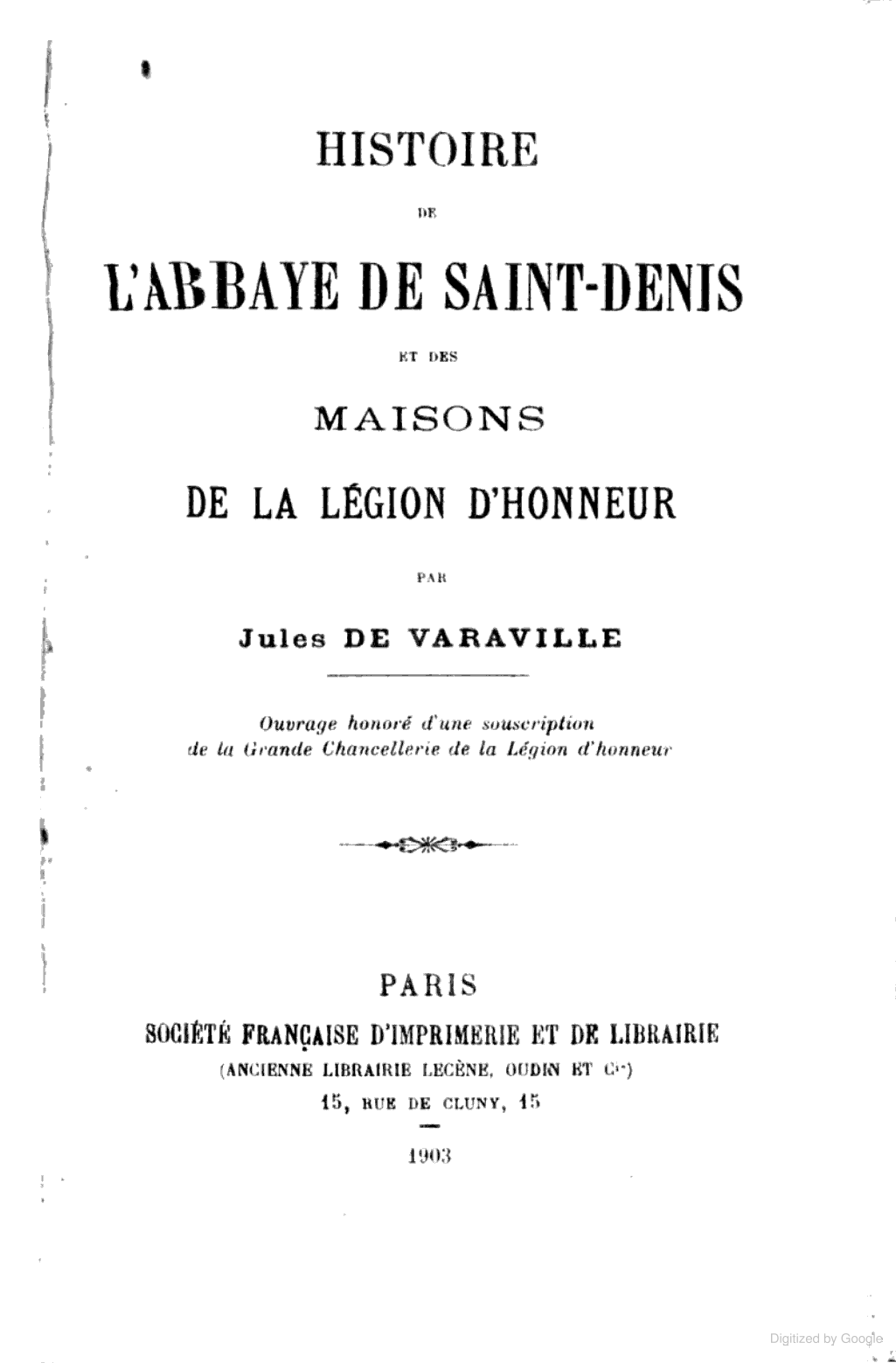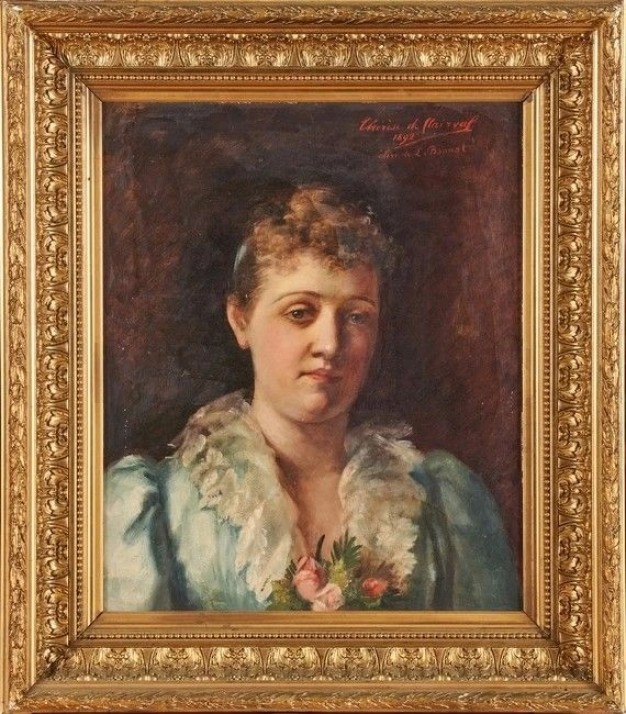Marie-Thérèse Charlotte de Clairval (1851-1920): Historian, Artist
Self portrait of the artist, 1892
Objects of intrigue and mystery will often present themselves on the cataloger’s desk, the most recent one being a print of George Washington from the collections of the David Library for the American Revolution. This print is an etching, ca. 1900, by Jules de Varaville. Upon researching the name, it has been discovered that ‘Jules de Varaville’ is a pseudonym for the female Algerian-born artist and writer Marie-Thérèse Charlotte de Clairval (1851-1920).
Marie-Thérèse Charlotte was born as Marie-Thérèse Morizot on February 27, 1851 in Algeria to French parents, Jacques Marie Jules Morizot and Catherine Daumesnil. Jules Morizot’s occupation is stated in a government bulletin as receiver of finances, thereby stationed in Algeria as part of the French colonization. He resigned in 1852, returning to France to live.
From what can be gathered amid scant biographical information, Marie-Thérèse most likely grew up wealthy in Saint-Denis and Paris. Her maternal grandfather was Pierre Daumesnil, who served as a general in Napoleon’s Grande Armée. She was baptized in 1853, along with her cousin Blanche Daumesnil, in a ceremony at the Maison d'éducation de la Légion d'honneur in Saint-Denis, one of the secondary schools established by Napoleon for female descendants of grantees awarded the Légion d'honneur. She likely was a student there as well, receiving a fairly sophisticated education. The maison d’education at Saint-Denis admitted only superior officers' daughters. In 1873, she married Henri Dessayettes de Clairval, viscount and senior military officer. It is here Marie-Thérèse’s personal biography retreats and her professional life begins.

The viscountess was highly interested in art, both as student and collector. She studied with Léon Bonnat, a painter and professor at the Ecole des Beaux Arts who was also a Grand Officer of the Légion d'Honneur. Why she chose to use the male pseudonym Jules de Varaville, is unknown. As a collector and donor of art to many museums, she used her official name. But as a creator, she was Jules de Varaville.

The Jules de Varaville etching of George Washington seems to be partially copied after a well known Gilbert Stuart portrait—the big difference being Washington’s smile in the de Varaville depiction. De Varaville’s drawing may be the only existing Washington portrait where he is smiling!
In the course of searching for Jules de Varaville, another portrait print of hers showed up online—that of John Paul Jones. Going for a mere $20 on etsy, the APS cataloger had to snap it up. The portrait of John Paul Jones isn’t as flattering as that of George Washington. Nevertheless, there does seem to be a faint smile. To spontaneously acquire a second portrait of an American Revolutionary figure by Jules de Varaville, and at such a reasonable price, seems appropriate in immediate context and in the spirit of the David Library.
As a donor of art, the viscountess of Clairval gave extensively to the municipal Pithiviers Museum, donating 50 drawings by Italian and French artists from the 15th to 19th centuries, as well as a few of her own paintings. She also donated sculptures to the Musée du Luxembourg and the Château de Versailles.
In addition to her interest in art, she wrote on history and culture, writing short biographies on Auguste Renoir and Mozart. She also published two books under the name Jules de Varaville: Histoire du château de Vincennes, des origines à nos jours (ca. 1900) and Histoire de l’abbaye de Saint-Denis et des maisons de la Légion d’honneur (1903). She died in 1920 in Paris.

There is much to be still learned about Marie-Thérèse Charlotte de Clairval. While her family background apparently inspired her interest in military history, why did she choose to draw figures of the American Revolution? What were her thoughts on Algeria, where her father was stationed and her grandfather fought in the Napoleonic wars? Did art serve as a means to establish her identity in the context of military history? Her station in life alongside her accomplishments in the realms of art and history inspire these questions.


